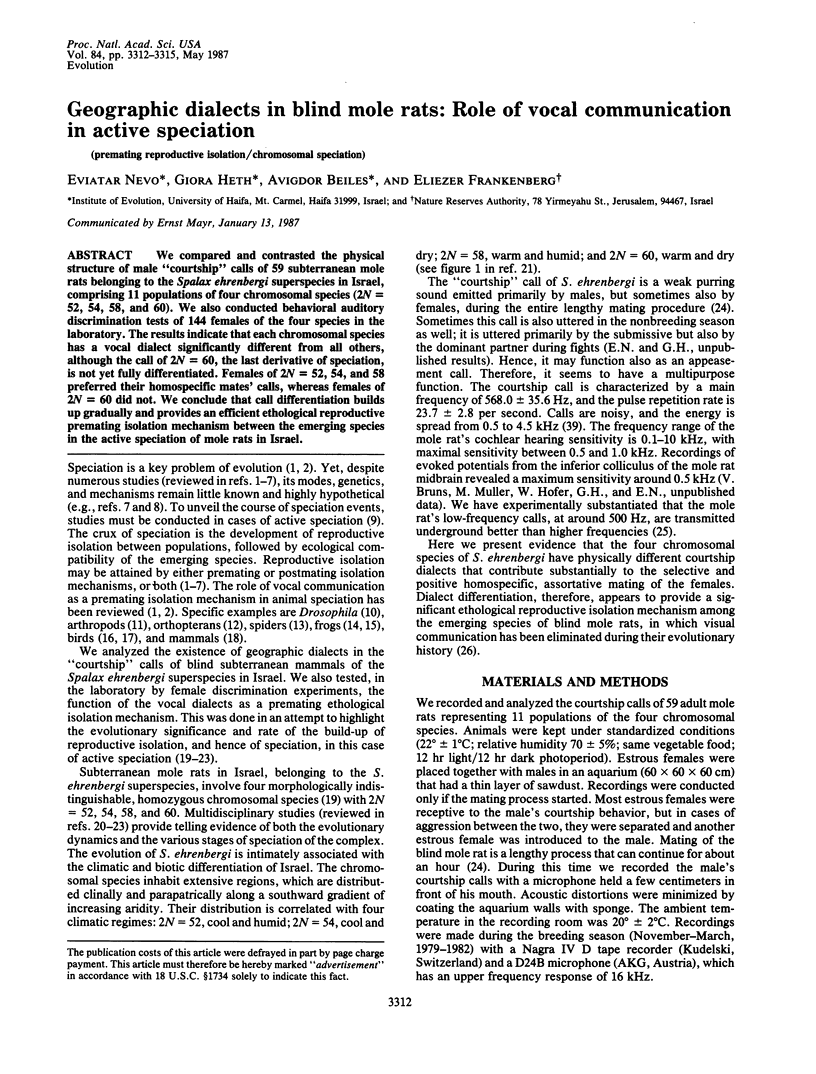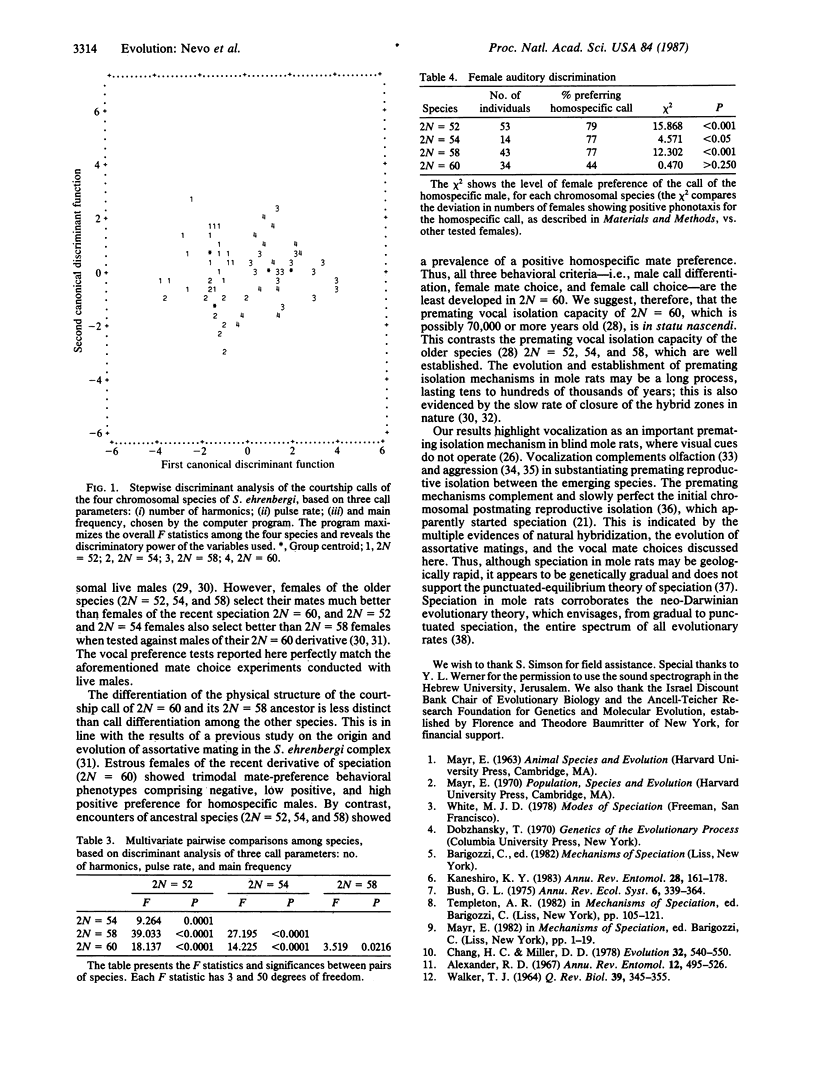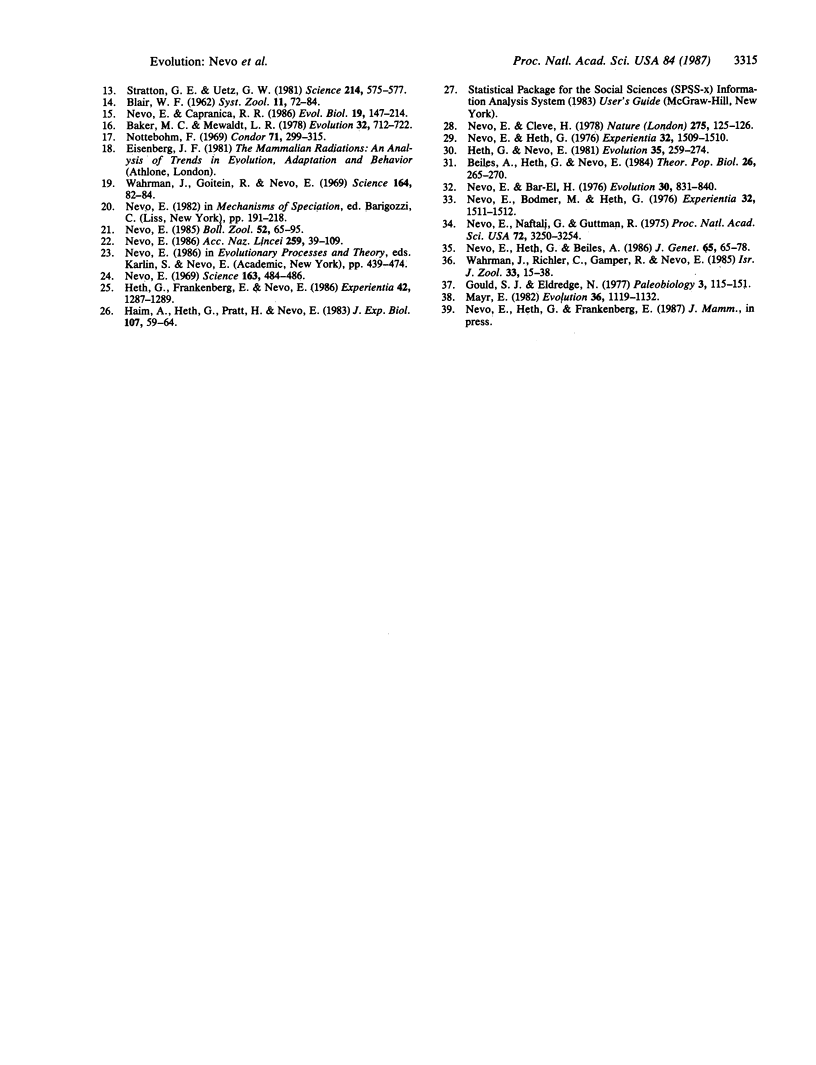Abstract
We compared and contrasted the physical structure of male "courtship" calls of 59 subterranean mole rats belonging to the Spalax ehrenbergi superspecies in Israel, comprising 11 populations of four chromosomal species (2N = 52, 54, 58, and 60). We also conducted behavioral auditory discrimination tests of 144 females of the four species in the laboratory. The results indicate that each chromosomal species has a vocal dialect significantly different from all others, although the call of 2N = 60, the last derivative of speciation, is not yet fully differentiated. Females of 2N = 52, 54, and 58 preferred their homospecific mates' calls, whereas females of 2N = 60 did not. We conclude that call differentiation builds up gradually and provides an efficient ethological reproductive premating isolation mechanism between the emerging species in the active speciation of mole rats in Israel.
Full text
PDF



Selected References
These references are in PubMed. This may not be the complete list of references from this article.
- Haim A., Heth G., Pratt H., Nevo E. Photoperiodic effects on thermoregulation in a 'blind' subterranean mammal. J Exp Biol. 1983 Nov;107:59–64. doi: 10.1242/jeb.107.1.59. [DOI] [PubMed] [Google Scholar]
- Heth G., Frankenberg E., Nevo E. Adaptive optimal sound for vocal communication in tunnels of a subterranean mammal (Spalax ehrenbergi). Experientia. 1986 Dec 1;42(11-12):1287–1289. doi: 10.1007/BF01946426. [DOI] [PubMed] [Google Scholar]
- Mayr E. Processes of speciation in animals. Prog Clin Biol Res. 1982;96:1–19. [PubMed] [Google Scholar]
- Nevo E., Bodmer M., Heth G. Olfactory discrimination as an isolating mechanism in speciating mole rats. Experientia. 1976 Dec 15;32(12):1511–1512. doi: 10.1007/BF01924423. [DOI] [PubMed] [Google Scholar]
- Nevo E., Cleve H. Genetic differentiation during speciation. Nature. 1978 Sep 14;275(5676):125–126. doi: 10.1038/275125a0. [DOI] [PubMed] [Google Scholar]
- Nevo E., Heth G. Assortative mating between chromosome forms of the mole rat, Spalax ehrenbergi. Experientia. 1976 Dec 15;32(12):1509–1511. doi: 10.1007/BF01924422. [DOI] [PubMed] [Google Scholar]
- Nevo E. Mole rat spalax ehrenbergi: mating behavior and its evolutionary significance. Science. 1969 Jan 31;163(3866):484–486. doi: 10.1126/science.163.3866.484. [DOI] [PubMed] [Google Scholar]
- Nevo E., Naftali G., Guttman R. Aggression patterns and speciation. Proc Natl Acad Sci U S A. 1975 Aug;72(8):3250–3254. doi: 10.1073/pnas.72.8.3250. [DOI] [PMC free article] [PubMed] [Google Scholar]
- Nevo E. Speciation in subterranean mammals. Prog Clin Biol Res. 1982;96:191–218. [PubMed] [Google Scholar]
- Stratron G. E., Uetz G. W. Acoustic communication and reproductive isolation in two species of wolf spiders. Science. 1981 Oct 30;214(4520):575–577. doi: 10.1126/science.214.4520.575. [DOI] [PubMed] [Google Scholar]
- Templeton A. R. Genetic architectures of speciation. Prog Clin Biol Res. 1982;96:105–121. [PubMed] [Google Scholar]
- Wahrman J., Goitein R., Nevo E. Mole rat Spalax: evolutionary significance of chromosome variation. Science. 1969 Apr 4;164(3875):82–84. doi: 10.1126/science.164.3875.82. [DOI] [PubMed] [Google Scholar]


